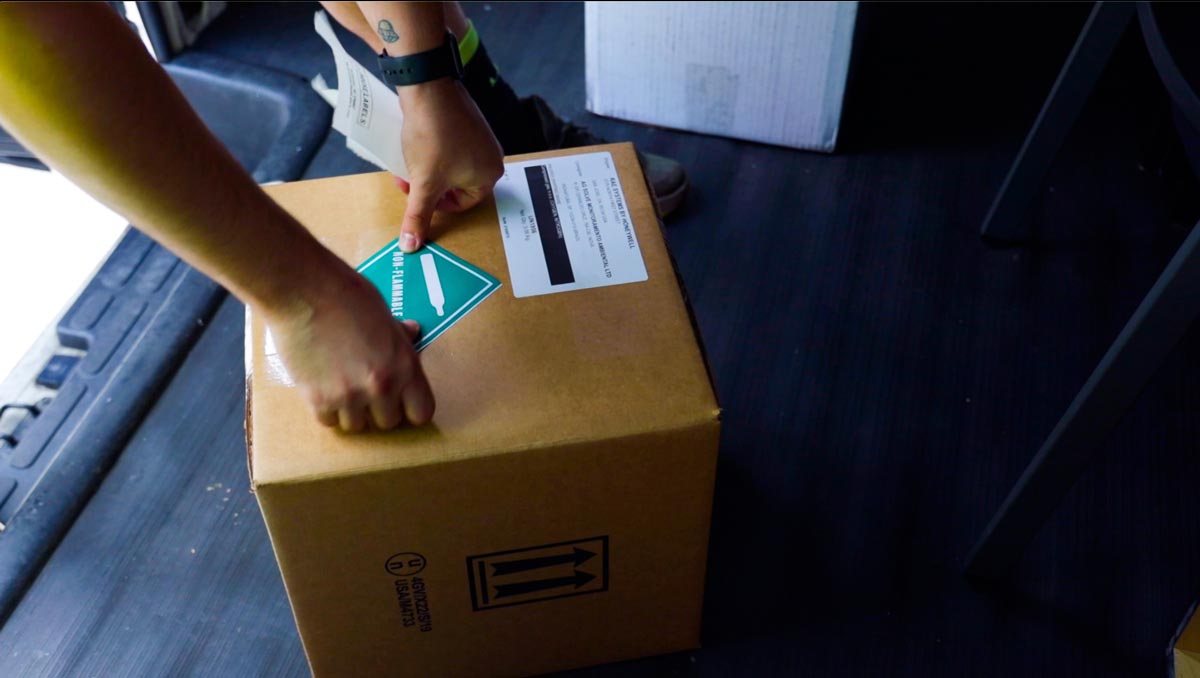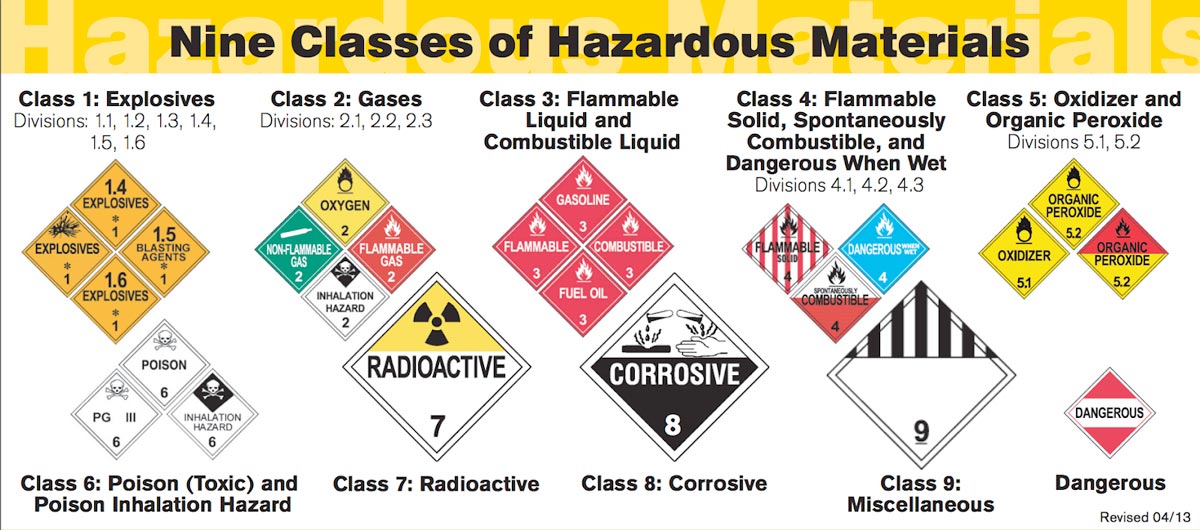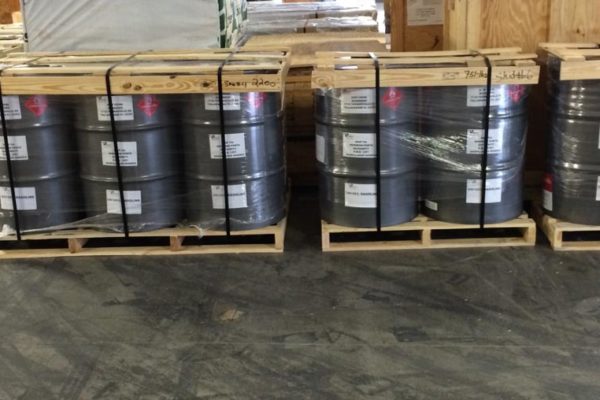 If your eCommerce business is selling perfumes, nail polish, paints, or fireworks (or anything in between), you want to make sure that your goods are properly packaged for compliant shipping. If not, you can face huge financial penalties that could cripple your business, and the fees won’t just be coming from DOT. Below, Hazmat Hub breaks down a clear guide to compliant shipping.
If your eCommerce business is selling perfumes, nail polish, paints, or fireworks (or anything in between), you want to make sure that your goods are properly packaged for compliant shipping. If not, you can face huge financial penalties that could cripple your business, and the fees won’t just be coming from DOT. Below, Hazmat Hub breaks down a clear guide to compliant shipping.
At the start of June 2019 major courier FedEx announced that they would be adding a fee of $350 for hazardous goods that are incorrectly packaged and shipped. This will greatly affect individuals and businesses who send goods to their consumers by way of FedEx.
Penalties will be assessed if:
- Incorrect packaging materials are used
- A package does not have the proper markings and labels
- A package is undeclared
- The material being shipped is prohibited
- The package is refused or abandoned
A hazardous material is any item or agent (biological, chemical, radiological, and/or physical), which has the potential to cause harm to humans, animals, or the environment, either by itself or through interaction with other factors.
If you are not clear as to what makes something a hazardous package, below is a list of some items that are considered dangerous goods and require compliant packaging.
Examples of Commonly Shipped Hazardous Goods:
- Explosives
- Fireworks
- Safety Flares
- Caps for toy guns
- Explosives
- Gasses
- Lighters
- Aerosols like spray paint and bathroom sprays
- Cosmetic sprays such as hair products, perfumes, etc.
- Gasses
- Flammable Liquids
- Some alcohols
- Nail polish
- Varnishes
- Essential oils
- Flammable Liquids
- Toxic & Infectious Substances
- Some disinfectants
- Pesticides
- Blood Samples
- Toxic & Infectious Substances
- Radioactive Material
- Smoke Alarms
- X-ray machines
- Radioactive Material
- Corrosives
- Paint stripper
- Mercury thermometers and barometers
- Drain cleaner
- Corrosives
- Other Hazardous Items that are commonly shipped:
- Dry Ice
- Engines
- Lithium batteries
- Battery powered vehicles
Click HERE to tell if your package is considered hazardous material.
After looking at this list, you may have realized that you are in fact shipping dangerous goods. Remember, once you’ve used the appropriate tools to determine that your shipment is considered hazardous, it is entirely up to you (the shipper) to appropriately handle, package, mark, label and declare your shipment.
Training Your Team For Hazmat Shipping
The person on your team who handles the shipment must be properly educated and trained on how to handle such goods. Hazmat training is a crucial step in ensuring compliance. Training for the handling of dangerous goods is not a one size fits all solution, there are different levels of training required for different types of materials. While this could seem like a tedious step, or one you’ve never done before, it is important that for the safety of the environment and those who will come into contact with your package that hazmat training is seen as valuable and “worth it” among your staff.
The Shipment Method for Your Hazardous Goods
Once you have ensured that your team is appropriately informed and trained, the employee preparing the shipment must know if it is being transported by ground, domestic or international air, domestic or international water, or rail.
Markings and Labels for Your Hazmat Shipment
 Because the type of shipping method can determine what labels and markings are appropriate for your package, this is the next step in the shipping process. You will want to refer to the 49 CFR and the Hazardous Materials Table.
Because the type of shipping method can determine what labels and markings are appropriate for your package, this is the next step in the shipping process. You will want to refer to the 49 CFR and the Hazardous Materials Table.
Hazardous Chemical Labels Must Have:
- Name, Address and Telephone Number
- Product Identifier
- Signal Word
- Hazard Statement(s)
- Precautionary Statement(s)
- Pictogram(s)
Safety Sheets for Shipping Hazardous Materials
The next step in handling the shipment is to ensure that each package is accompanied by a Safety Data Sheet (SDS). An SDS ensures that those who come into contact with a package after the initial shipper will understand the potential hazards of the shipment.
Packaging Requirements for Your Hazardous Shipment
You will want to make sure that the materials being used to contain your hazardous shipment are tested and approved.
 Declaration of Your Dangerous Good Shipment
Declaration of Your Dangerous Good Shipment
There are certain hazardous goods that can’t be shipped with other materials, and so it is up to you (the shipper) to ensure that your shipment is properly declared as “dangerous.” Accurate declarations allow carriers to properly separate your hazmat freight.
Keeping Documentation for Your Hazmat Shipment
You will want to keep all records and documentation related to your hazmat shipment on file for 2 years.
More About Retention and Recordkeeping.
When handling the shipment of hazardous materials you may need a partner to ensure that you are following all the necessary steps to guarantee compliance. When you know you are compliant that, you can rest easy knowing that your business is saving time and money by avoiding substantial penalties.
Hazmat Hub, powered by The Freight Hub Group, is comprised of a team of expertly trained professionals who understand each aspect of shipping dangerous cargo. We offer Hazmat Training, Documentation, Transportation, Packaging, Repackaging, Technology, Secure Storage, and we are TSA Approved and Safety Certified.
Check back each week for more informational tips, hazmat news and ways to stay compliant! Learn more about how Hazmat Hub uses technology when working with our partners to maintain compliance and safety.
Take control of your Hazmat transport that can assure you transparency from the port to your destination nationwide, request a free quote today and discover your hazmat logistics solution.
Aritcle Sources:
- https://www.phmsa.dot.gov/standards-rulemaking/hazmat/federal-hazardous-materials-transportation-law-overview
- https://danielstraining.com/hazardous-material-shipping-paper-retention-and-recordkeeping-requirements/


 Declaration of Your Dangerous Good Shipment
Declaration of Your Dangerous Good Shipment



